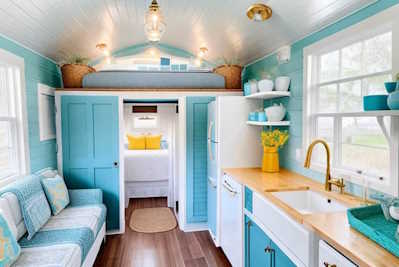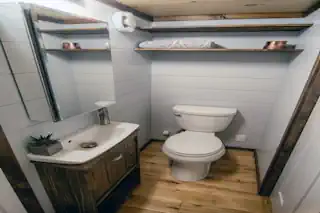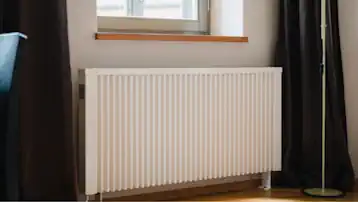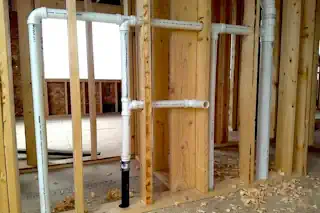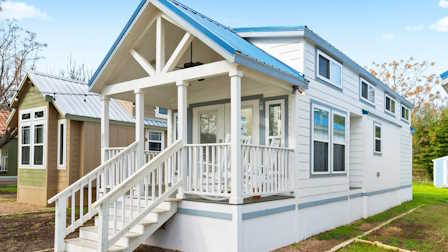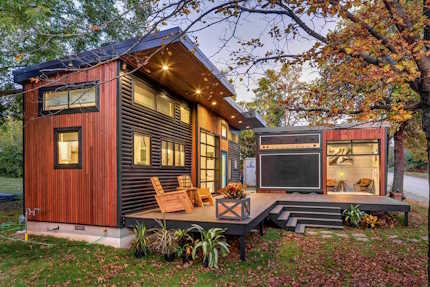The Tiny Home Shuffle: Navigating the Mobility Maze
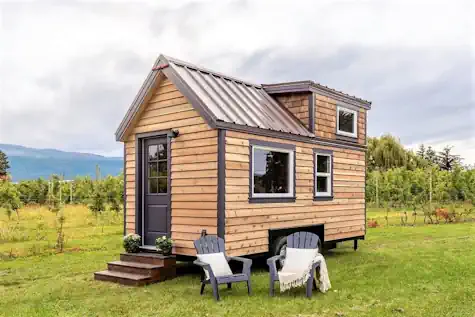
The allure of tranquility, freedom from financial burdens, and the minimalist ethos have propelled the tiny home movement into the forefront of alternative living. For a growing number of individuals and families, the decision to downsize is not just a lifestyle, but a philosophy. Yet, among the myriad considerations of transitioning to a tiny home, mobility stands out as a critical, albeit sometimes overlooked, factor.
In this exploration, we venture into the world of mobility within the tiny home movement, outlining the pertinent concerns, innovative solutions, and real-life examples that bring this unique aspect of tiny living to life. Whether you’re a seasoned enthusiast, an intrepid shopper, or simply intrigued by the prospect of compact living, this post unpacks the complex issue of tiny home mobility to help you better understand this vital component of the lifestyle.
The Allure of Tiny Houses
Tiny homes embody a radical departure from the conventional view of home ownership. These ingeniously designed, small-scale dwellings—typically less than 400 square feet—offer an affordable escape from the shackles of overspending and over-consumption. They symbolize a shift towards sustainability, a connection with nature, and the promise of a simpler, more meaningful existence.
The appeal is diverse, attracting people from a variety of walks of life. For some, it’s an eco-friendly choice, as tiny homes generally have a smaller ecological footprint. For others, it’s a financial decision, offering a path to debt-free living and financial independence. Adventurers are drawn to the mobile aspect, envisioning a life on the road, and exploring distant locales without sacrificing the comforts of home.
The Importance of Mobility
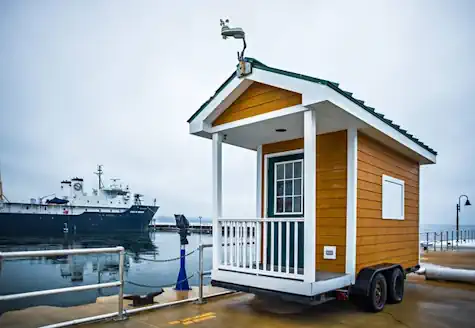
Portability is one of the defining features of a subset of tiny homes—mobile tiny houses. Mobility not only allows for flexibility in dwelling locations but also aligns with the movement’s ethos of freedom. For those who value living with fewer possessions and attachments, the ability to pick their property up and move at a moment’s notice is liberating.
The brunt of this freedom comes with challenges, however. Preparing for the road can be as complex as setting up in a traditional home. There are regulations to consider, infrastructural questions, and the practicalities of pulling a small house behind a vehicle. Understanding and addressing these facets of mobility is crucial for a seamless tiny home experience.
Facing the Hurdles of Mobility
The dream of taking your tiny home across state lines or out to the wilderness often collides with the realities of our built environment and legal systems. While overcoming these hurdles is possible, it requires foresight, planning, and sometimes, patience.
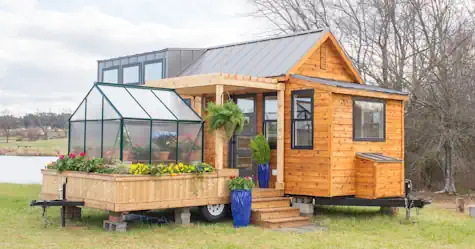
Top 10 Hurdles for Mobility of Tiny Homes
Zoning Laws and Building Codes: Navigating the patchwork of local zoning laws and building codes that often don’t accommodate tiny homes or mobile tiny houses.
Vehicle Towing Capacity: Ensuring your vehicle has the towing capacity required to pull your tiny home, which may require upgrading to a more powerful vehicle.
Road Legalities: Complying with road legal requirements, including maximum height and width restrictions, which can vary significantly from one jurisdiction to another.
Insurance Challenges: Securing proper insurance for a mobile tiny home can be complicated and more expensive than standard homeowner’s insurance.
Finding Suitable Land: Locating land that allows for tiny homes, whether for a short stay or long-term living, can be difficult due to restrictive zoning laws.
Utility Connections: Managing water, sewage, and electricity connections while on the move, which can be a logistical challenge in remote areas or when constantly relocating.
Community Resistance: Facing resistance or outright bans from communities and homeowners’ associations that may not be welcoming to tiny homes.
Weather Considerations: Designing and reinforcing your tiny home to withstand diverse weather conditions, especially when moving between climates.
Parking and Anchorage Regulations: Abiding by regulations for parking and anchoring a tiny home, can prevent legal issues and fines.
Accessibility of Setting Up: The practicalities and sometimes physical challenges of setting up and breaking down a tiny home’s site, including leveling, hooking up utilities, and ensuring stability.
Infrastructure Limitations
The current infrastructure is designed for larger, traditional homes. Tiny homes, especially those designed for mobility, have different requirements for parking, access to water, and power. Adapting accessible tiny homes to these limitations while ensuring a comfortable standard of living can be a daunting task. Trailer parks and camping sites have available infrastructure for the mobile tiny home but often come with unreasonable fees. For short stays, these may be acceptable but for a more permanent placement, these are often not a great choice.
Regulatory Hurdles
Zoning laws, building codes, and local ordinances can vary significantly, presenting a challenge for tiny homeowners who wish to move frequently. Navigating these legal landscapes demands a thorough understanding of the regulations in different jurisdictions and the willingness to engage with local authorities to find workable solutions.
Top 5 Ways to Research Zoning Laws, Building Codes, and Local Ordinances
Consult the Local Government Websites: Most local governments have their zoning laws, building codes, and ordinances available online. Searching the official website of the city or township where you’re considering placing your tiny home is an excellent first step.
Visit the Local Planning or Building Department: For more detailed inquiries and the latest updates that might not be online, visiting the local planning or building department in person can provide comprehensive insights and clarifications.
Contact a Local Real Estate Agent: Real estate agents are often well-versed in local zoning laws and can be valuable resources. They can provide practical advice and insights, especially on where tiny homes are welcome.
Utilize Online Forums and Social Media Groups: Online communities focused on tiny living can offer personal experiences, advice, and sometimes even specific documents or contacts that can help in understanding local regulations.
Hire a Local Attorney: For navigating complex legal landscapes or when planning to undertake a significant investment, consulting with a local attorney specializing in real estate or tiny homes can ensure compliance and prevent future legal issues.
Practical Considerations for Moving a Tiny House
The very nature of a tiny home built on a chassis or foundation designed for travel means considering the logistics of moving. Owners need to ensure their homes are roadworthy, properly secured for transport, and compliant with weight and size regulations. Safety is paramount, and each move must be carefully planned to prevent damage to the home or others on the road.
Innovations Enhancing Tiny Home Mobility
In response to the challenges facing mobile tiny homes, a wave of innovation has emerged. Trailers and wheels are being redesigned for increased durability and ease of towing. Cutting-edge off-grid technologies are enabling self-sufficiency even in the most remote locations. Perhaps most importantly, communities of tiny homeowners and advocates are rallying to address the parking and moving needs of their members.
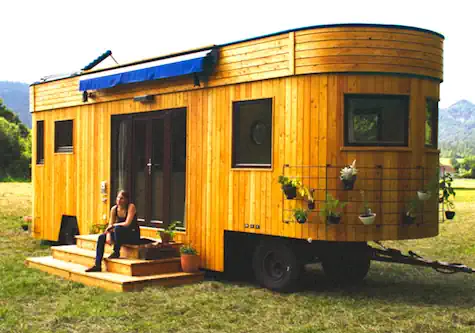
Advancements in Trailer Design
The trailers on which many mobile tiny homes are built have seen significant improvements. Lightweight materials, advanced hitches, and integrated leveling systems are just a few of the features that are making it easier to tow these mini-dwellings across the country.
Off-Grid Power and Utilities
Advancements in solar, wind, and water power technologies mean that today’s mobile tiny homes can function off the grid for extended periods. High-efficiency appliances and smart energy management systems further reduce reliance on traditional utility hook-ups.
Community Solutions for Parking and Moving
Tiny home communities are not only burgeoning in number but are also becoming more organized and influential. By pooling resources and knowledge, these communities can negotiate for dedicated parking spaces, organize group moves, and even lobby for changes to local regulations to better accommodate mobile tiny houses.
The Owner’s Manual to Mobility
For those considering or currently living in a mobile tiny home, there are several essential steps to ensure a smooth transition between locations. From securing the appropriate permits and insurance to maintaining your tiny home for long-term mobility, preparation is key.
Top 10 Things to Know for Moving Your Mobile Tiny Home
Review Local Traffic Laws: Before hitting the road, understand the specific traffic laws related to towing in the areas you’ll be traversing.
Secure Necessary Permits: Ensure you have the right permits for moving a tiny home, as requirements vary by location. You may need both a transportation and a building permit at the time you get the tiny house built and for each future move.
Check Insurance Coverage: Verify that your insurance policy covers your tiny home during transit and at its new location.
Plan Your Route in Advance: Consider the height, width, and weight of your tiny home when planning your route to avoid issues with bridges, tunnels, and road weight limits.
Prepare for Towing: If towing your tiny home, make sure your vehicle is capable of handling the load and that you have the appropriate towing gear.
Conduct a Pre-Move Safety Check: Inspect tires, lights, brakes, and connections on your tiny home and towing vehicle. Safety on the road is paramount.
Secure Your Home’s Contents: Make sure all items within your tiny home are secured to prevent damage during transit.
Understand Setup and Utility Connections: Familiarize yourself with the process for setting up your home and connecting to utilities at your new location.
Communicate with Your New Community: If moving into a tiny home community, communicate with management about your arrival and any specific rules or procedures.
Be Ready for Adjustments: Once at your new location, be prepared to make adjustments to your tiny home setup based on the specifics of your new site, such as leveling the foundation and optimizing utility connections.
Every tiny homeowner’s situation is unique, and moving your home requires careful planning and preparation to ensure a successful transition.
Learning how to drive with a tiny house in tow, connecting with the larger tiny house living and home community, and aiming for self-reliance when on the move can turn what seems like a challenge into an adventure.
The Future of Mobility in the Tiny Living Movement
Looking ahead, the issues surrounding mobility within the tiny home movement are both complex and dynamic. As the community grows, so too will the need for sustainable and supportive infrastructure, amenities, and the push for regulatory changes to accommodate this unique form of living. Tiny house builders who understand multifunctional living systems, environmentally friendly solutions, and affordable housing options will help make our tiny house on wheels a much more accessible home.
While challenges remain, the commitment of tiny home enthusiasts and owners to a mobile, minimalist lifestyle is inspiring creative solutions and fostering a sense of unity. The future of the tiny home movement is not just about smaller houses but also about bigger, more mobile dreams.
This post has barely scratched the surface of the depth and breadth of issues surrounding the mobility of tiny homes. For those eager to immerse themselves further or who need support, there is a wealth of resources available, from legal advocacy groups to online communities.
In conclusion, the tiny home movement embodies the spirit of independence, sustainability, and adventure. Navigating the mobility maze is an integral part of this journey, one that requires a commitment to the community, an adaptable spirit, and a willingness to innovate. It’s an exciting, challenging, and ultimately rewarding path that is reshaping our notions of home and the possibilities of living small—but dreaming big.
Frequently Asked Questions (FAQ)
Can any vehicle tow a mobile tiny home?
Not all vehicles are capable of towing a mobile tiny home. The towing vehicle must have the requisite towing capacity, which depends on the weight of the tiny home. It’s essential to consult your vehicle’s manual and possibly a professional to determine suitability.
How do you secure a parking space for a mobile tiny home?
Securing a parking space involves researching local zoning laws, connecting with tiny home communities, and sometimes negotiating with private landowners. Availability and regulations vary widely, so it’s important to start this process well before moving.
Are there standardized insurance policies for mobile tiny houses?
Insurance for mobile tiny houses can vary, but there are policies available that cover both the home itself and its transit. It’s important to shop around and speak with insurance providers who are familiar with accessible tiny houses and homes to find a policy that fits your needs.
Do I need to disconnect utilities every time I move my tiny home?
Yes, utilities must be attached and disconnected each time you move your tiny house. This includes water, electricity, and any other services. Planning and preparation are key to ensuring that you can safely disconnect and reconnect these services at your new location.
What are the most common challenges when considering a tiny house movement?
Common challenges include navigating traffic laws and road restrictions, finding suitable parking or land, ensuring the structural integrity of the home during transit, and managing utilities. Preparation, research, and community support are vital to overcoming these challenges.
How often can I move my mobile tiny home?
The frequency of moves largely depends on the homeowner’s preference, the home’s design, and the logistical and legal considerations of the destinations. Some tiny homes are built for frequent relocation, while others are suited for occasional moves.
Is living in a mobile tiny home more sustainable than traditional housing?
Mobile tiny houses can offer a more sustainable lifestyle through reduced energy consumption, minimalistic living, and the use of eco-friendly materials. However, the sustainability and cost of living in a mobile tiny home also depends on individual practices and choices.
Can I live off-grid in any mobile-accessible tiny house?
Yes, many mobile tiny houses are equipped with off-grid capabilities, including solar power, composting toilets, and water collection systems. Planning and preparation are crucial to successfully living off-grid.
What legal obstacles might I face with a mobile tiny home?
Legal challenges can include zoning laws, construction codes, and regulations specific to tiny homes. Navigating these obstacles may require research, advocacy, and sometimes legal assistance.
Where can I find a community of mobile tiny homeowners?
There are numerous online forums, social media groups, and tiny home associations where owners share experiences, advice, and support. Attending tiny home conventions and events is also a great way to connect with the community. There are many advantages to finding a community where you want to be located.
